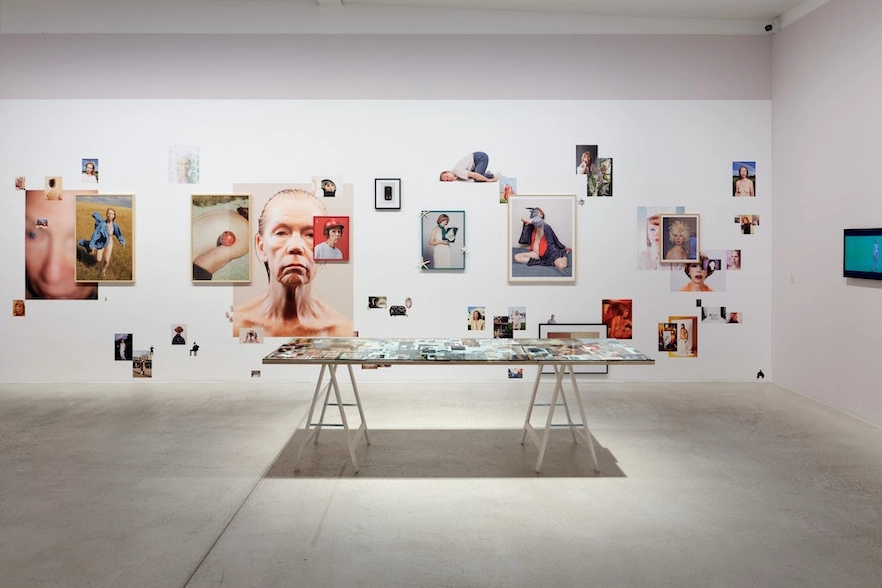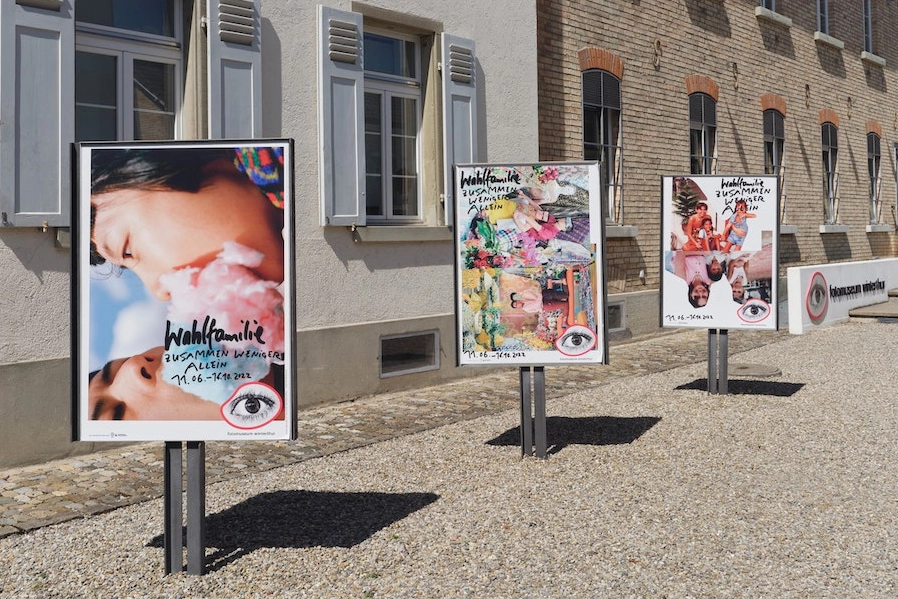Founded in 1993 by writer and journalist Urs Stahel, critic and publisher Walter Keller and philanthropist and collector George Reinhart, Fotomuseum Winterthur is located in a former factory
Fotomuseum Winterthur
Currently directed by Nadine Wietlisbach, Fotomuseum Winterthur opened its doors in 1993 in the homonymous Swiss city, located just a few miles from Zurich. It was founded by writer and journalist Urs Stahel, critic and publisher Walter Keller and philanthropist and collector George Reinhart: «They felt the need to create a place dedicated to photography at a time when it was not yet accepted into the art world and was hardly shown in museums. Their goal was to make people understand photography as a medium in society, as well as to celebrate it as a cultural and artistic form of expression».
Fotomuseum Winterthur is located in a former factory, which was built in the Nineteenth century and over time had been used for the manufacturing of textiles, paper and wood. In the late Eighties the building was bought by George Reinhart’s brother, Andreas, who was an entrepreneur and wanted to turn it into a cultural space. Therefore, when in 1990 Urs, Walter and George came up with the idea of a photography museum, the perfect location for their project was already there, waiting for them. Urs Stahel was the first director of the museum and remained in charge for twenty years: «He played a role in the definition of the identity and reputation of the museum».
All the shades of contemporary photography at Fotomuseum Winterthur
Fotomuseum Winterthur has a permanent collection, but also hosts temporary events, which can be either solo shows or thematic exhibitions. The permanent collection consists of works from the Sixties onwards and it has grown alongside the exhibitions program: «Usually, when we host a show, we try to acquire some of the works for our collection».
The starting point of the permanent collection was documentary narrative photography, which includes works by Robert Frank, Nan Goldin, Boris Mikhailov and Max Pinckers. With the following acquisition of the Jedermann Collection conceptual art photography was also added, featuring works by Sarah Charlesworth, Victor Burgin, Sherrie Levine and Hans-Peter Feldmann.
Fotomuseum Winterthur: Plat(t)form
Besides such established names, Fotomuseum Winterthur’s permanent collection also welcomes emerging talents, with a dedicated program called Plat(t)form. Since 2007 the museum invites every year forty-two young artists from all over Europe to come to Winterthur and present their portfolio to experts and to the public: «For us it is an occasion to buy some of their work and to find potential talents whom to develop projects with».
Post-photographic works that challenge, reflect on and extend the notion of photography has also become one of the museum’s priorities since 2015, when its focus was recalibrated in response to the increasing circulation of photographic media and images under digital conditions.
In addition, Fotomuseum Winterthur has an ephemera collection, which «has grown spontaneously, as we have always appreciated everything that goes alongside photography, such as leaflets, publications, prints. These may not be considered as works of art, but we feel that they are relevant for understanding the artistic expression of a person».
During the last couple of years, the museum has focused less on acquiring new works and more on studying the ones already in its possession: «We study them more in detail and ask ourselves where do they come from, why do we have them, how were they made, what may be problematic about them today and how can we recontextualize them».
Photography as art and social tool in Switzerland
From the beginning, the museum attempted to showcase a broad and diverse variety of photography, looking at it both as an art and as a social tool, as well as enquiring its scientific practices.
«On the one side, we aim at having a diverse range of photographic practices, looking at photography from a contemporary angle, showing how it is used today on the internet and on social media and reflecting on the vernacular practices of our digital era. On the other side, we also want to have a diverse range of voices, choosing to work with artists who can offer a critical approach to how photography is today used for political and social purposes, as well as providing an analysis of the medium itself, of the image of the world it creates. Of course, we try to show works that have an aesthetic and individual signature, but at the same time we do not want to celebrate photography just for photography’s sake».
Frida Orupabo and Tilda Swinton
For example, in 2022 Fotomuseum Winterthur gave space to Frida Orupabo, Norwegian Nigerian artist and sociologist that creates analogue and digital black-and-white collages and video installations using visual material circulating online: «From photographs from the colonial era as well as from contemporary imagery, from ethnography, medicine and science to art and pop culture, Orupabo dissected representations of the Black, mostly female body as a means to negotiate themes of colonial violence, racism, sexuality and identity».
In addition, it hosted Orlando, a show curated by Tilda Swinton and based on Virginia Woolf’s novel: «Swinton took up the central concerns of the novel in a special issue she devised for the magazine Aperture and in an accompanying exhibition: gender fluidity, the idea of boundless consciousness and the prospect of eternal life. Her concept brought together the work of eleven artists – a combination of established contemporary positions and images by photographers who had yet to be discovered».
Fotomuseum Winterthur expands its boundaries online
Fotomuseum Winterthur carries out various online programs in English to target an international audience: «We were one of the earliest institutions in Europe to have a digital curator in 2015». However, the museum started to explore the digital space even before that, in 2012, when its blog Still Searching was launched. The blog deals with photographic theory and reflects on the role of photography in contemporary visual culture: «Since photographic media and forms are incorporated into complex technological, capitalist and ideological networks, the experts who are conducting scholarly research into the role of photographic images and whom we invite to contribute to our blog come from different disciplines».
Fotomuseum Winterthur also runs an online project in collaboration with The Photographers’ Gallery in London, which is called Screen Walks: «Artists are invited to share their screens and online work, to take us in online places which are relevant for photography – it can be marketplaces, social media, the places they work in». The project investigates various digital practices, offers a behind-the-scenes look at artists’ work and uncovers new, current and forgotten digital spaces.
Fotomuseum: [permanent beta]
A further example of the museum’s interest towards digital image is [permanent beta], an online platform that explores the algorithmic and networked image cultures and their socio-political impact. The aim of the platform is to bring together contributions from curators, artists and scholars presented in the form of audiovisual and performative explorations, podcasts, essays and dialogic formats, dealing with a particular theme for a period of two to three years and culminating in a show and a publication. Entitled The Lure of the Image, [permanent beta]’s focus until 2025 will be on the affective and seductive power of the image.
Educational activities for the local community
While Fotomuseum Winterthur’s online programs target a specialized audience, the projects it carries out on site for the local community are meant to be much more inclusive. Indeed, one of the museum’s pillars is education, with a variety of activities for children and teenagers. The goal is not only to promote art education, but also to raise awareness about image and media content: «We look at what kind of data and digital footprint we leave behind when we take or post a picture, and how images influence our political opinions and identities. We want to give children and teenagers both critical and creative tools».
Provided with a photo studio and a lab, the museum also offers educational activities for adults in the form of analog workshops.
What’s next for Fotomuseum Winterthur
In 2023 Fotomuseum Winterthur will host the solo shows of two female artists: Italian Senegalese Adji Dieye, who uses photography, video and performance to examine the themes of postcolonialism and nation-building, and Austrian Valie Export, who examined sociopolitical and feminist issues challenging the male gaze and the patriarchal system. The latter will be the first exhibition dedicated to the photographic oeuvre of Valie Export and will be staged in cooperation with Vienna’s Albertina Museum.
Both will run from February to May, then the museum will shut down for a renovation process. The reopening is planned for the beginning of 2025, when The Lure of the Image will inaugurate the museum’s new spaces. In the meantime, Fotomuseum Winterthur will intensify its online activity and continue its local educational activities.
Fotomuseum Winterthur
Fotomuseum Winterthur, Grüzenstrasse 44-45, 8400 Winterthur, Switzerland, is a museum that hosts a permanent collection of contemporary photography and organizes temporary exhibitions, as well as online projects and on-site educational activities.




















